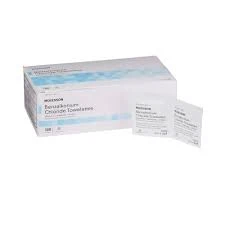isothiazolinone in detergent
The Role of Isothiazolinones in Detergents Understanding Their Benefits and Concerns
Isothiazolinones are a class of synthetic compounds commonly used as preservatives and antimicrobial agents in various consumer products, including detergents. Their application in cleaning products has gained significant attention due to their effectiveness in preventing microbial growth and extending shelf life. However, concerns regarding their safety and potential health impacts have sparked debates among consumers and regulatory bodies alike.
What Are Isothiazolinones?
Isothiazolinones, including compounds such as methylisothiazolinone (MIT) and chloromethylisothiazolinone (CMIT), are known for their potent biocidal properties. They are frequently employed in water-based formulations, making them a popular choice in the detergent industry. These compounds work by disrupting the cellular functions of bacteria, fungi, and algae, thus mitigating the risk of contamination in products such as laundry detergents, fabric softeners, and household cleaners.
Benefits of Isothiazolinones in Detergents
1. Effective Preservatives One of the primary advantages of incorporating isothiazolinones into detergents is their effectiveness as preservatives. They help prevent microbial spoilage, which can not only affect the detergent's efficacy but also compromise the hygiene of laundered fabrics.
2. Extended Shelf Life By preventing the growth of microorganisms, isothiazolinones contribute to a longer shelf life for liquid detergents. This is particularly important for consumers who may not use products immediately or those who buy in bulk.
3. Versatility Isothiazolinones are effective at low concentrations, making them economical for manufacturers. Their ability to work well in various pH levels and temperatures further enhances their appeal in the formulation of cleaning products.
4. Environmental Adaptability The chemical structure of isothiazolinones allows them to be effective in various environmental conditions, which is important for products intended for diverse applications and conditions.
isothiazolinone in detergent

Growing Concerns Over Safety
Despite their benefits, isothiazolinones have been at the center of safety discussions. Several studies have highlighted potential health risks associated with these compounds, particularly skin sensitization and allergic reactions. For instance, methylisothiazolinone is known to cause dermatitis in sensitive individuals, leading to calls for stricter regulations regarding their usage in consumer products.
Regulatory bodies, such as the European Union, have responded by implementing guidelines that limit the concentration of isothiazolinones in cosmetics and personal care products. While laundry detergents often fall under different regulatory frameworks, the scrutiny over their use persists. In recent years, many manufacturers have begun to reformulate products to exclude isothiazolinones altogether, opting for alternative preservatives that offer lower toxicity profiles.
Consumer Awareness and Industry Response
As consumers become more aware of ingredient safety and potential allergens, there is a growing demand for transparency in product formulation. Brands are responding by labeling their products clearly and, in some cases, providing alternatives to isothiazolinones. This shift reflects a broader trend towards clean and green products, where consumers prioritize formulations free from controversial chemicals.
Companies are investing in research to develop safer and more effective alternatives to isothiazolinones. Biobased preservatives and natural antimicrobial agents are gaining traction as consumers search for eco-friendly cleaning solutions that align with their values.
Conclusion
Isothiazolinones play a significant role in the detergent industry, providing effective antimicrobial properties that ensure product longevity and cleanliness. However, the growing concerns about their safety necessitate a balanced approach to their use. Manufacturers must remain vigilant in adhering to safety regulations and consumer preferences while continuing to innovate and explore alternative preservatives. As we move into an era of greater awareness about health and sustainability, the future of detergents may lean towards more natural formulations that maintain efficacy without compromising safety.
-
lk-319-special-scale-and-corrosion-inhibitor-for-steel-plants-advanced-solutions-for-industrial-water-systemsNewsAug.22,2025
-
flocculant-water-treatment-essential-chemical-solutions-for-purification-processesNewsAug.22,2025
-
isothiazolinones-versatile-microbial-control-agents-for-industrial-and-consumer-applicationsNewsAug.22,2025
-
scale-inhibitor-key-solutions-for-water-system-scale-preventionNewsAug.22,2025
-
organophosphonates-versatile-scale-inhibitors-for-industrial-water-systemsNewsAug.22,2025
-
scale-and-corrosion-inhibitor-essential-chemical-solutions-for-water-system-maintenanceNewsAug.22,2025





